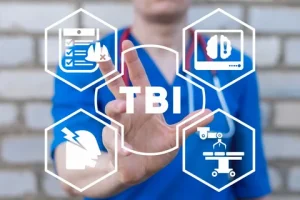
The Root Cause Revolution: How Functional Medicine Rewrites the Story of Autoimmune Disease
For decades, millions of people have lived under the weight of autoimmune diseases—conditions where the body turns against itself.

What if everything you’ve been told about recovering from a traumatic brain injury is only half the story? Each year, millions of individuals suffer from traumatic brain injuries (TBI), ranging from mild concussions to severe, life-altering trauma. While emergency rooms and neurologists can stabilize patients and manage immediate danger, the road to true recovery is often long, vague, and frustrating. Families and patients are frequently left in limbo—armed with prescriptions, advised to rest, and told to simply wait and monitor symptoms. For many, this passive approach to healing feels incomplete. And that’s because it is. In his groundbreaking book Alternative Treatments to TBI: What Should You Do for Brain Injury Recovery Immediately?, Dr. John W. Jung presents a different perspective—one that challenges the limits of conventional medicine. Dr. Jung, a chiropractic neurologist with years of clinical experience, believes that healing the brain requires more than medication and rest. It requires activation, stimulation, and holistic attention to the body’s natural ability to repair itself. The conventional model, while necessary in acute cases, often falls short when it comes to helping individuals regain functionality, emotional balance, and long-term wellness. That’s where alternative medicine steps in.
The book opens the door to a variety of practical, science-backed therapies that can be done at home, often without expensive equipment or specialized intervention. Dr. Jung argues that the brain is not a static organ—it’s plastic, dynamic, and capable of rewiring itself if given the right signals. This concept, known as neuroplasticity, is the foundation of his work. He shows how simple exercises—like spinning in a chair, reading words aloud, smelling pleasant scents through the left nostril, or listening to music in a specific ear—can help re-engage the brain after injury. These techniques are not random. They are grounded in the way the brain processes sensory input. For instance, the frontal lobe typically receives input from the opposite side of the cerebellum 95% of the time. So, by engaging specific sides of the body through targeted sensory or motor activities, patients can stimulate underactive areas of the brain and promote healing.
This is where conventional medicine often misses the mark. Traditional neurologists and general practitioners may be excellent at diagnosing damage but rarely provide day-to-day tools for recovery. Instead, they rely heavily on imaging scans and pharmaceutical treatments. While these have their place—especially for inflammation or pain—they do little to actively support the brain’s rebuilding process. Dr. Jung calls out this gap and urges readers to take action. His message is empowering: you don’t have to wait. You can begin healing today, right now, with the tools already available to you. Central to his approach is chiropractic neurology, a field that merges the hands-on techniques of chiropractic care with brain-based therapies. It’s not about cracking bones or adjusting posture in the traditional sense—it’s about reading subtle signals from the body and delivering specific sensory inputs to the brain to correct imbalances. According to Dr. Jung, many TBI patients experience neurological dysfunctions that don’t show up on CT scans or MRIs. These include overactive or underactive brain hemispheres, poor coordination between different lobes, or sensory integration issues. Chiropractic neurology doesn’t wait for a scan to show damage—it identifies what the brain can or can’t do and works with that directly.
Throughout the book, Dr. Jung gives detailed examples of how different parts of the brain respond to specific stimuli. He explains, for example, how the left temporal lobe prefers visual landmarks and music in the right ear, while the right temporal lobe responds better to left-ear input and negative smells. These connections might sound unusual, but they show the brain’s unique way of organizing information. By learning how to use these patterns, patients and caregivers can help direct healing where it’s needed most. Another critical point Dr. Jung makes is that timing matters. The brain is most receptive to rehabilitation shortly after trauma. Yet many patients are told to rest indefinitely and avoid stimulation, delaying this vital period of neuroplastic opportunity. Dr. Jung challenges this notion, suggesting that controlled, intentional activation of the brain—when done correctly—can shorten recovery time and improve outcomes. In this way, alternative treatments are not fringe or secondary—they are essential.
Importantly, Dr. Jung does not position alternative therapies in opposition to conventional medicine. Rather, he recommends for a complementary approach. Medications can manage symptoms, and emergency care can save lives, but full recovery often requires more than that. It requires an integrative mindset—a willingness to look beyond standard protocols and discover what the body and brain can achieve with support from all sides. This is not a rejection of science but a greater embrace of it, including newer understandings of how the brain functions and heals. The strength of Alternative Treatments to TBI lies not only in its medical insights but also in its accessibility. Dr. Jung speaks directly to readers as a guide, not just as a doctor. He understands that caregivers and patients are often overwhelmed and desperate for guidance. His book offers them a clear guide—not a miracle cure, but a meaningful plan rooted in real-world success and neurological science. The tone is hopeful, never preachy; empowering, never talking down to the reader.

For decades, millions of people have lived under the weight of autoimmune diseases—conditions where the body turns against itself.

The human brain is one of the most extraordinary organs in existence—capable of adapting, learning, and healing itself in ways that science is only beginning to understand.
Sign up for Dr. John W. Jung’s newsletter and receive exclusive content on brain injury recovery, alternative treatments, and cutting-edge research. By subscribing, you’ll get expert tips on improving brain health, updates on new therapies and research findings, special offers, upcoming events, and exclusive excerpts and bonus content from Dr. Jung’s work.
Don’t miss out—join our community today!